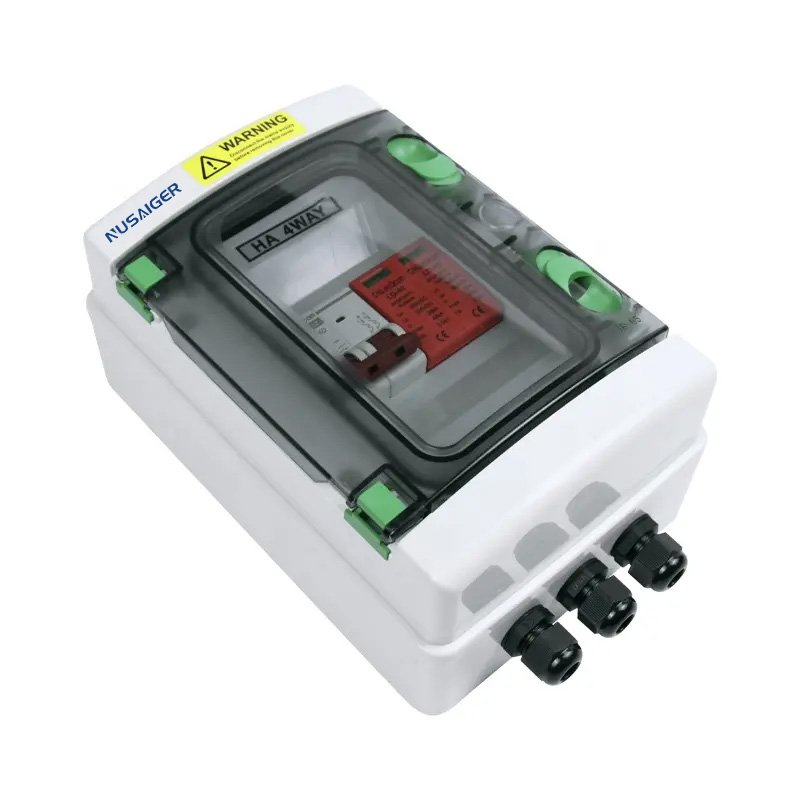Understanding PV Combiner Boxes: Essential Functions, Selection Criteria, and Maintenance Guide
As the adoption of solar energy continues to grow globally, ensuring the efficiency and safety of solar power systems is becoming increasingly critical. One essential component in photovoltaic (PV) systems is the PV combiner box, also known as the solar combiner box or string combiner box. This article offers a deep dive into everything you need to know about PV combiner boxes, including their functions, how to choose the right one, installation tips, troubleshooting advice, and maintenance recommendations. Whether you’re a solar installer, procurement engineer, or end-user, this comprehensive guide will help you make informed decisions and avoid costly mistakes.
1. What is a PV Combiner Box?
A PV combiner box is an electrical enclosure used in solar power systems to combine the output of multiple solar panel strings into a single DC output. It simplifies wiring, improves safety, and allows easier monitoring and maintenance of solar arrays. The combiner box is usually installed between the PV modules and the inverter, acting as an essential interface for current flow and circuit protection.
1.1 Key Components of a PV Combiner Box
- DC Fuses or Circuit Breakers: Protect each string from overcurrent.
- Surge Protection Device (SPD): Protects against voltage surges from lightning or grid faults.
- Disconnect Switch: Allows isolation of the combiner box for maintenance.
- Monitoring Equipment (optional): Measures voltage, current, and temperature.
- Busbars: Connect multiple inputs to a single output.
2. Why Use a PV Combiner Box?
Using a PV combiner box in your solar power system offers several advantages:
- Streamlined wiring: Reduces the complexity of cable routing from PV modules to inverters.
- Improved safety: Ensures each string is protected by fuses and surge arresters.
- Centralized maintenance: Easier to locate and resolve faults at one centralized point.
- Reduced material cost: Less conduit and wire needed compared to running each string separately.
- System scalability: Facilitates easy expansion of the PV array.
3. How to Choose the Right PV Combiner Box?
Selecting the right PV combiner box depends on several key parameters:
3.1 Number of Strings
The number of inputs (string inputs) the box should handle depends on your PV array design. Typical combiner boxes offer 4 to 24 input channels.
3.2 Voltage and Current Ratings
Ensure the combiner box supports the maximum system voltage (usually 600V, 1000V, or 1500V DC) and current requirements. Oversized boxes waste money; undersized boxes pose safety hazards.
3.3 Protection Devices
- Choose between fuses and circuit breakers depending on local codes and preferences.
- Make sure the SPD inside is rated appropriately (e.g., Type 2 for DC PV systems).
3.4 Enclosure Material
For outdoor installations, ensure the enclosure is weatherproof, preferably with an IP65 or higher rating. Choose stainless steel or UV-resistant polycarbonate for durability.
3.5 Monitoring Capabilities
In commercial or industrial applications, opt for combiner boxes with integrated current and voltage monitoring modules to detect performance anomalies quickly.
4. Installation Best Practices
Correct installation of the PV combiner box is essential for safety and performance. Here are practical guidelines:
- Mount at an accessible height: Ensure technicians can reach for inspection and maintenance.
- Keep cables organized: Use cable glands and strain reliefs to reduce mechanical stress.
- Proper grounding: Connect the grounding bar to the system’s grounding point to avoid electric shock and damage.
- Use appropriate conduit: Protect cables from physical damage, water ingress, and UV exposure.
5. Common Problems and Troubleshooting
5.1 Fuse or Circuit Breaker Trip
Possible causes include short circuits, module mismatch, or overcurrent. Isolate and test each string to identify the faulty one.
5.2 SPD Failure
Surge protectors degrade over time, especially after multiple lightning strikes. Replace SPDs every few years or if LED indicators show failure.
5.3 Moisture Inside the Box
Poor sealing or damaged gaskets can lead to water ingress. Use desiccant packs and reseal the box properly.
6. Maintenance Tips
- Visually inspect the box and wiring every 6 months.
- Clean the enclosure surface to prevent dust buildup.
- Check for loose terminals and corrosion on connectors.
- Test SPD indicators and fuse integrity.
- Review data logs if monitoring is available.
7. Applications and Use Cases
PV combiner boxes are used in a variety of settings:
- Residential rooftops (typically 2–4 strings)
- Commercial rooftops (6–12 strings)
- Utility-scale solar farms (12–24+ strings with monitoring)
- Off-grid systems (with hybrid inverters and battery integration)
8. Compliance and Standards
Ensure your combiner box meets national and international standards such as:
- IEC 61439-2 for low-voltage switchgear and control gear assemblies
- UL 1741 in the United States
- NEC 690 for PV installations
9. Frequently Asked Questions
Q1: Can I install a PV combiner box myself?
Unless you’re a certified solar technician or electrician, it’s safer and more compliant to let professionals handle the installation.
Q2: Is a combiner box necessary for every system?
Not always. For small systems with only one or two strings, it may not be necessary. For systems with three or more strings, a combiner box is highly recommended.
Q3: What’s the lifespan of a combiner box?
Typically 10–25 years, depending on environmental conditions and quality of materials used.
10. Conclusion
PV combiner boxes may appear as simple junction enclosures, but they are a critical part of ensuring your solar power system functions efficiently and safely. By understanding their functions, selecting the right type, and maintaining them properly, you can extend the life of your entire solar installation while ensuring maximum output and safety.



